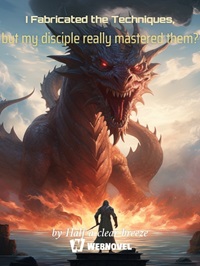v2 Chapter 352: Share Incentive
The new lithium battery company is called Xinghai New Energy Technology Company, referred to as "Xingdian", which is a holding subsidiary of Xinghai Group.
Xinghai Group invested 15% of the shares with technology, and the battery factory currently under construction will increase its capital by 5.9 billion yuan, accounting for a total of 76% of the shares;
Xinghai Investment Company's lithium resource shares are worth 1 billion yuan, and an additional 2 billion yuan will be added, accounting for a total of 23% of the shares.
Leaving 1% of the shares for Zeng Qun, Huang Lin, Li Ping and others to buy shares.
The original Ningde Times was merged into Xinghai New Energy Technology Co., Ltd., and the Ningde Times Company no longer existed.
Ningde Times Company was merged into the new company by Xinghai Group at a premium of 75 million yuan. Zeng Qun, Huang Lin and Li Ping still need to increase their capital by 25 million yuan, which is equivalent to 100 million yuan. Get 1% of the new company.
Not enough money, Mu Yang borrowed money to advance.
Zeng Qun holds 0.6% of the new company's shares, Huang Lin holds 0.25%, and Li Ping holds 0.15%, for a total of 1% of the new company's shares.
If such investment proportion is used, the actual market value of the start-up company is 11.76 billion yuan.
In fact, this ternary lithium battery technology is not only worth 1.76 billion yuan, but it is not a problem to sell it to other companies and sell it for several billion yuan.
Therefore, Zeng Qun and three people got 1% of the shares for 100 million yuan, which has actually taken a lot of advantage.
Moreover, no matter how they raise funds in the future, this 1% stake will not be diluted, which is very important to them.
Zeng Qun's annual salary is 3 million yuan, and Huang Lin and Li Ping's annual salary is 1.5 million yuan.
Muyang made a bet with the three of them. As long as the company's market value reaches 200 billion yuan and the annual profit exceeds 5 billion yuan, Muyang will reward the three of them with 0.5% of the shares and 0.15% of the shares to reward other core members;
The company's market value reaches 500 billion yuan, and the annual profit reaches 10 billion yuan. The three people will be rewarded with a total of 0.5% of the shares, and 0.15% of the shares will be awarded to other core members;
The market value of the company reaches 1 trillion yuan, and the annual profit reaches 20 billion yuan, and then 1% of the shares will be awarded, and 0.2% of the shares will be awarded to other core members.
At the end of each year, the company will reward its employees with 1.5% of its profits. The three partners will receive a total of no more than 0.5% of the year-end dividend. After deducting their shares, they actually get 99% of the 0.5% year-end dividend.
Motivation can only be achieved if there is a ladder goal, which is equivalent to Muyang giving out 2.5% of the shares as an incentive, of which 2% is given to the three partners.
How much is 2.5%?
Given the size of the new company, that's a lot.
If Muyang only gave money, not technology, and let Zeng Qun and others develop, 2.5% would certainly be less, and 5% would not be much.
Therefore, how much you give depends on how much the subordinates contribute.
In addition to the new company, Muyang also plans to use Xinghai Investment Company, Xinghai Food Company and Cultural Tourism Company to test and motivate them.
There are various considerations for not giving it at the beginning, mainly because Muyang still has the energy to manage these companies.
Now Muyang is starting to give up. If these responsible persons don't have share incentives, their enthusiasm will drop. They feel that they will work for Muyang no matter what they do. When they feel unbalanced, they will start another job and do it alone. There are too many things like this.
The new company here,
Zeng Qun is the president of the new company, Huang Lin and Li Ping are the vice presidents, and the vice president in charge of finance is dispatched from Xinghai Group to supervise financial revenue and expenditure. Personnel, it can be said, has a great deal of authority.
As the actual controller, Muyang exercises the right to supervise and manage major matters of its holding subsidiaries, and enjoys the right of investment income and decision-making on major matters to the investment enterprises according to law.
To put it simply, Mu ** has the right to veto, but he is only responsible for the general direction, and generally does not care about things. Just like Xinghai Investment Company, Yang Nian is fully responsible.
Another difference is that the ternary lithium battery R&D team of Xinghai Group has not been merged into the new company. It is still a group company and will send people to the factory. The new company is not responsible for the technical research and development of lithium batteries.
Xinghai Group is responsible for the technical research and development and subsequent optimization of ternary lithium batteries. That is to say, if Xingdian Company is listed, but the actual technology is still controlled by Xinghai Group, it does not mean that Xinghai Group can mess up.
For example, Xinghai Group has developed a more advanced ternary lithium battery, and will it start a new energy vehicle battery company? Can it be licensed to other companies?
Of course not!
As long as it is a lithium battery, but it is still used in the automotive industry, there is a conflict of interest with Xingdian, and investment fraud has already formed, then it will not work.
However, Xinghai Group has developed more advanced non-lithium batteries, such as nuclear fusion batteries, and it is no problem to start another furnace.
In other words, it is no problem to apply the current ternary lithium battery in aviation and start another furnace.
Therefore, the ternary lithium battery technology of Xinghai Group is not only worth the 15% of Xingdian shares.
If one day, Muyang sells Xingdian, although Xinghai Group can no longer apply lithium batteries in new energy vehicles, it can develop other batteries for application in new energy vehicles, such as hydrogen batteries.
This kind of cross-holding will reduce a lot of trouble after future financing.
Xingdian buys the production line of ternary lithium battery from Xinghai Group, and it must also be purchased at the market price.
Xingdian can use the resources of Xinghai Group and Xinghai Investment Company to pay the corresponding expenses. Zeng Qun's team's main job is to expand production capacity indefinitely and be responsible for production, quality and sales.
The last day of the auto show,
Mu Yang came to the auto show and walked around at random. The audience was much smaller, but there were still many audiences in his company's exhibition area.
These six or seven days of registration have collected customers who are interested in buying a Hummer EV. The number of registrations exceeds 2,000, which seems to be a small number, but this is just an auto show.
However, Muyang still wants to wait for the global pre-sale of the Hummer EV before deciding whether to put it into production in China.
Towards the end, Xinghai Group held a media conference to announce that Xinghai New Energy Technology Co., Ltd., a subsidiary of Xinghai Group, would undertake global orders for ternary lithium batteries.
Xinghai New Energy Technology Co., Ltd. plans to build a ternary lithium battery processing plant in Ningde, with an annual production capacity of 20GWh, which can meet the battery supply of 300,000 new energy vehicles.
The Ningde era was acquired, and of course the biggest beneficiary is Huachen BMW, which can directly buy finished goods. Of course, the price is another discussion.
The domestic ex-factory price of Star Power's ternary lithium battery is 1,500 yuan/kWh, and the export price is an additional fee based on 1,500 yuan/kWh.
This price is definitely high. If it is a few years later, the cost per kilowatt-hour of the ternary lithium battery may not exceed one thousand yuan.
But now Xinghai Group has a monopoly and advanced technology.
The cost of the battery is so high that the battery cost of an electric vehicle with 60 kWh of electricity accounts for 90,000 yuan. If the cost of the battery pack does not exceed 50%, the comprehensive cost of an electric vehicle will be at least 180,000 yuan, and the manufacturer's guide price should reach 210,000 yuan. Yuan or more.
If it's really this price, it's hard to sell.
The state provides subsidies to new energy vehicle companies. For new energy vehicles that meet the support conditions, before 2013, a subsidy of 3,000 yuan/kWh will be given, or a maximum subsidy of 60,000 yuan/unit for pure electric passenger vehicles.
After each company sells 50,000 plug-in hybrid and pure electric passenger vehicles, the national finance will appropriately reduce the subsidy standard.
There are also various conditions. For example, the requirements before 2013 are: provide a warranty of no less than 5 years or 100,000 kilometers for key components such as power batteries, and promise to recycle the whole vehicle and power battery at a certain depreciation rate; The energy of the power battery pack is not less than 15 kWh, etc.
The subsidy of 3,000 yuan per kilowatt-hour is very strong, but the maximum subsidy for pure electric vehicles is 60,000 yuan per vehicle.
With a battery pack of 60 kWh, the actual subsidy is 60,000 yuan, not 180,000 yuan.
This subsidy is indeed for car companies.
However, automobile manufacturers must sell new energy vehicles to private users at the price after deducting subsidies.
What does that mean?
For example, the original manufacturer's guide price is 210,000 yuan, and the actual price sold to customers is 21-6=150,000 yuan!
Instead of taking 210,000 yuan from customers, you can also earn 60,000 yuan in subsidies from the state!
it's out of the question!
The state ultimately targets consumers and benefits them.
The actual amount of subsidy will depend on many details. Each time period is different. Before 2013, it was relatively rough, and after 2013, it was different, and even changed every year. There are strict requirements for cruising range and battery energy density. , those car companies with backward technology will be eliminated.
Of course, car companies are not without benefits. The price of the car is 60,000 lower, the car is easy to sell, and the actual profit margin has increased.
In addition, car companies have other policy subsidies, which are aimed at car companies.
The state vigorously subsidizes car companies and develops new energy vehicles, which has made the price of new energy vehicles low and benefited the public.
(End of this chapter)
Xinghai Group invested 15% of the shares with technology, and the battery factory currently under construction will increase its capital by 5.9 billion yuan, accounting for a total of 76% of the shares;
Xinghai Investment Company's lithium resource shares are worth 1 billion yuan, and an additional 2 billion yuan will be added, accounting for a total of 23% of the shares.
Leaving 1% of the shares for Zeng Qun, Huang Lin, Li Ping and others to buy shares.
The original Ningde Times was merged into Xinghai New Energy Technology Co., Ltd., and the Ningde Times Company no longer existed.
Ningde Times Company was merged into the new company by Xinghai Group at a premium of 75 million yuan. Zeng Qun, Huang Lin and Li Ping still need to increase their capital by 25 million yuan, which is equivalent to 100 million yuan. Get 1% of the new company.
Not enough money, Mu Yang borrowed money to advance.
Zeng Qun holds 0.6% of the new company's shares, Huang Lin holds 0.25%, and Li Ping holds 0.15%, for a total of 1% of the new company's shares.
If such investment proportion is used, the actual market value of the start-up company is 11.76 billion yuan.
In fact, this ternary lithium battery technology is not only worth 1.76 billion yuan, but it is not a problem to sell it to other companies and sell it for several billion yuan.
Therefore, Zeng Qun and three people got 1% of the shares for 100 million yuan, which has actually taken a lot of advantage.
Moreover, no matter how they raise funds in the future, this 1% stake will not be diluted, which is very important to them.
Zeng Qun's annual salary is 3 million yuan, and Huang Lin and Li Ping's annual salary is 1.5 million yuan.
Muyang made a bet with the three of them. As long as the company's market value reaches 200 billion yuan and the annual profit exceeds 5 billion yuan, Muyang will reward the three of them with 0.5% of the shares and 0.15% of the shares to reward other core members;
The company's market value reaches 500 billion yuan, and the annual profit reaches 10 billion yuan. The three people will be rewarded with a total of 0.5% of the shares, and 0.15% of the shares will be awarded to other core members;
The market value of the company reaches 1 trillion yuan, and the annual profit reaches 20 billion yuan, and then 1% of the shares will be awarded, and 0.2% of the shares will be awarded to other core members.
At the end of each year, the company will reward its employees with 1.5% of its profits. The three partners will receive a total of no more than 0.5% of the year-end dividend. After deducting their shares, they actually get 99% of the 0.5% year-end dividend.
Motivation can only be achieved if there is a ladder goal, which is equivalent to Muyang giving out 2.5% of the shares as an incentive, of which 2% is given to the three partners.
How much is 2.5%?
Given the size of the new company, that's a lot.
If Muyang only gave money, not technology, and let Zeng Qun and others develop, 2.5% would certainly be less, and 5% would not be much.
Therefore, how much you give depends on how much the subordinates contribute.
In addition to the new company, Muyang also plans to use Xinghai Investment Company, Xinghai Food Company and Cultural Tourism Company to test and motivate them.
There are various considerations for not giving it at the beginning, mainly because Muyang still has the energy to manage these companies.
Now Muyang is starting to give up. If these responsible persons don't have share incentives, their enthusiasm will drop. They feel that they will work for Muyang no matter what they do. When they feel unbalanced, they will start another job and do it alone. There are too many things like this.
The new company here,
Zeng Qun is the president of the new company, Huang Lin and Li Ping are the vice presidents, and the vice president in charge of finance is dispatched from Xinghai Group to supervise financial revenue and expenditure. Personnel, it can be said, has a great deal of authority.
As the actual controller, Muyang exercises the right to supervise and manage major matters of its holding subsidiaries, and enjoys the right of investment income and decision-making on major matters to the investment enterprises according to law.
To put it simply, Mu ** has the right to veto, but he is only responsible for the general direction, and generally does not care about things. Just like Xinghai Investment Company, Yang Nian is fully responsible.
Another difference is that the ternary lithium battery R&D team of Xinghai Group has not been merged into the new company. It is still a group company and will send people to the factory. The new company is not responsible for the technical research and development of lithium batteries.
Xinghai Group is responsible for the technical research and development and subsequent optimization of ternary lithium batteries. That is to say, if Xingdian Company is listed, but the actual technology is still controlled by Xinghai Group, it does not mean that Xinghai Group can mess up.
For example, Xinghai Group has developed a more advanced ternary lithium battery, and will it start a new energy vehicle battery company? Can it be licensed to other companies?
Of course not!
As long as it is a lithium battery, but it is still used in the automotive industry, there is a conflict of interest with Xingdian, and investment fraud has already formed, then it will not work.
However, Xinghai Group has developed more advanced non-lithium batteries, such as nuclear fusion batteries, and it is no problem to start another furnace.
In other words, it is no problem to apply the current ternary lithium battery in aviation and start another furnace.
Therefore, the ternary lithium battery technology of Xinghai Group is not only worth the 15% of Xingdian shares.
If one day, Muyang sells Xingdian, although Xinghai Group can no longer apply lithium batteries in new energy vehicles, it can develop other batteries for application in new energy vehicles, such as hydrogen batteries.
This kind of cross-holding will reduce a lot of trouble after future financing.
Xingdian buys the production line of ternary lithium battery from Xinghai Group, and it must also be purchased at the market price.
Xingdian can use the resources of Xinghai Group and Xinghai Investment Company to pay the corresponding expenses. Zeng Qun's team's main job is to expand production capacity indefinitely and be responsible for production, quality and sales.
The last day of the auto show,
Mu Yang came to the auto show and walked around at random. The audience was much smaller, but there were still many audiences in his company's exhibition area.
These six or seven days of registration have collected customers who are interested in buying a Hummer EV. The number of registrations exceeds 2,000, which seems to be a small number, but this is just an auto show.
However, Muyang still wants to wait for the global pre-sale of the Hummer EV before deciding whether to put it into production in China.
Towards the end, Xinghai Group held a media conference to announce that Xinghai New Energy Technology Co., Ltd., a subsidiary of Xinghai Group, would undertake global orders for ternary lithium batteries.
Xinghai New Energy Technology Co., Ltd. plans to build a ternary lithium battery processing plant in Ningde, with an annual production capacity of 20GWh, which can meet the battery supply of 300,000 new energy vehicles.
The Ningde era was acquired, and of course the biggest beneficiary is Huachen BMW, which can directly buy finished goods. Of course, the price is another discussion.
The domestic ex-factory price of Star Power's ternary lithium battery is 1,500 yuan/kWh, and the export price is an additional fee based on 1,500 yuan/kWh.
This price is definitely high. If it is a few years later, the cost per kilowatt-hour of the ternary lithium battery may not exceed one thousand yuan.
But now Xinghai Group has a monopoly and advanced technology.
The cost of the battery is so high that the battery cost of an electric vehicle with 60 kWh of electricity accounts for 90,000 yuan. If the cost of the battery pack does not exceed 50%, the comprehensive cost of an electric vehicle will be at least 180,000 yuan, and the manufacturer's guide price should reach 210,000 yuan. Yuan or more.
If it's really this price, it's hard to sell.
The state provides subsidies to new energy vehicle companies. For new energy vehicles that meet the support conditions, before 2013, a subsidy of 3,000 yuan/kWh will be given, or a maximum subsidy of 60,000 yuan/unit for pure electric passenger vehicles.
After each company sells 50,000 plug-in hybrid and pure electric passenger vehicles, the national finance will appropriately reduce the subsidy standard.
There are also various conditions. For example, the requirements before 2013 are: provide a warranty of no less than 5 years or 100,000 kilometers for key components such as power batteries, and promise to recycle the whole vehicle and power battery at a certain depreciation rate; The energy of the power battery pack is not less than 15 kWh, etc.
The subsidy of 3,000 yuan per kilowatt-hour is very strong, but the maximum subsidy for pure electric vehicles is 60,000 yuan per vehicle.
With a battery pack of 60 kWh, the actual subsidy is 60,000 yuan, not 180,000 yuan.
This subsidy is indeed for car companies.
However, automobile manufacturers must sell new energy vehicles to private users at the price after deducting subsidies.
What does that mean?
For example, the original manufacturer's guide price is 210,000 yuan, and the actual price sold to customers is 21-6=150,000 yuan!
Instead of taking 210,000 yuan from customers, you can also earn 60,000 yuan in subsidies from the state!
it's out of the question!
The state ultimately targets consumers and benefits them.
The actual amount of subsidy will depend on many details. Each time period is different. Before 2013, it was relatively rough, and after 2013, it was different, and even changed every year. There are strict requirements for cruising range and battery energy density. , those car companies with backward technology will be eliminated.
Of course, car companies are not without benefits. The price of the car is 60,000 lower, the car is easy to sell, and the actual profit margin has increased.
In addition, car companies have other policy subsidies, which are aimed at car companies.
The state vigorously subsidizes car companies and develops new energy vehicles, which has made the price of new energy vehicles low and benefited the public.
(End of this chapter)







